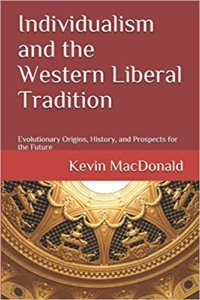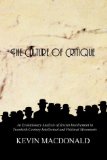In the first half of May, 2023, I received an email from John Terhune, a reporter for the Portland Press Herald newspaper in Portland, Maine, who was working on a story about White racial activism that resulted in an email exchange between us. I’ve decided what we wrote each other might be of worth to others. John has OK’d my sharing it. I told him I’d hold off going public with our contacts until after his article was published.
A note: neither of us capitalized white and black and I’ve left it that way.
John’s initial email:
Hi Robert,
I hope you’re well. I’m a reporter for the Portland Press Herald in Maine and I’m hoping you might be interested in speaking with me for a story we’re working on.
We’ve heard anecdotal reports of a growing white nationalist movement in Northern New England and we’re looking into whether this is true and, if so, what’s behind it. As part of our reporting, we’ve been interviewing pro-white activists in the area. One of the men we’ve spoken to, [a name I’ve decided not to share], said your work on race has been very influential in pro-white communities and that we should try to connect with you.
Would you be willing to speak with us about white supremacy and the factors that appear to be pushing the philosophy more toward the mainstream? My sense is these ideas are often misunderstood by the general public – I want to make sure I understand them myself so that I can fairly present them to our readers.
Please let me know if you’d like to chat, and we can set up a time. Or, if you’re not the person to talk to but you have suggestions for someone else who might be, please don’t hesitate to pass his name along.
Thanks,
John
My emailed reply a couple days later:
John—
I’m up for helping you on your story if I can. I’m hearing impaired and don’t use a phone, so email is best. Though I’m experimenting with a new captioned internet phone arrangement that might work.
The best thing I can think of to do is sketch out some thoughts and suggestions and if you have specific questions you can get back to me.
My experience has been that journalists writing about white wellbeing and advocacy stay within the “there’s a menace lurking in the backyard” party line illustrated with a couple of scary anecdotes and fleshed out with quotes from wacko-sounding whites and people hostile to whites, the Southern Poverty Law Center and the Anti-Defamation League prominent among them. Safe (you could get in deep trouble if you come off friendly to white organization and collective action), no heavy lifting, no muss, no fuss.
The way you are framing the article—the rise of white nationalism—sounds like you might be conforming to this pattern. There are white nationalists, but why did you choose this label? And later in your email you use the term “white supremacy.” Those are two tags employed to demonize and marginalize white racial consciousness, advocacy, and activism. I’m personally not a white nationalist, a white supremacist, an extremist, a right winger, or a neo-Nazi, and I’m not a crazed racist or violent, and I don’t hate anybody, and I’m not ignorant, and that applies to the great majority of whites with a public voice and to racially conscious white people generally, but you’d never know that from mainstream media coverage.
That said, here are some sources and people you could look into if you have the time and interest, though you really don’t need to do any of this to get your article written.
The most prominent white nationalist is Greg Johnson (Ph.D) and his website Counter-Currents. I suggest talking with Johnson.
Johnson wrote a book on white nationalism. You can read it.
Jim Goad is a featured writer on the Counter-Currents site. I consider him to be as fine a journalist as they come, both content and prose. Check him out.
Twenty years ago, I wrote a book on a prominent white nationalist William Pierce called The Fame of a Dead Man’s Deeds. You could peruse it.
Fifteen years ago, I wrote a book made up of interviews from everyday white people on their outlook on race that I think still holds up, One Sheaf, One Vine: Racially Conscious White Americans Talk About Race. You could sample it.
Two prominent white interests and advocacy sites are (Yale alum) Jared Taylor’s American Renaissance and (Professor Emeritus) Kevin MacDonald’s The Occidental Observer. Check out the two sites and talk to Taylor and MacDonald.
I have an archive of articles in The Occidental Observer.
https://www.theoccidentalobserver.net/author/robert-s-griffin/ You could skim through the articles for anything that looks like it might inform what you are putting together.
Three articles in my archive that might be relevant to your article:
https://www.theoccidentalobserver.net/2020/06/13/a-suggestion-to-american-white-advocates-root-your-arguments-in-this-countrys-core-political-and-cultural-ideals/
https://www.theoccidentalobserver.net/2019/03/30/where-is-calvin-coolidge-when-we-need-him/
https://www.theoccidentalobserver.net/2018/03/11/dont-give-your-enemies-a-club-to-beat-you-over-the-head-with/
Check out The Unz Review online. It includes articles about white people and their heritage that don’t trash them.
https://www.unz.com/
In your article, you could provide an orientation—whites presuming to participate in identity politics—and offer a list of some of these websites and invite readers to look into this concern for themselves. This rather than settling for you telling them what’s going on.
Hope this helps. Get back with me if you’d like. Good luck with your article.
Robert
A couple of days later, John’s reply:
Hi Robert,
Thanks for your detailed response. I particularly appreciate you pointing out some issues you have with how I framed the landscape of white advocacy — I’m personally very interested in learning more about the differences between how these groups view themselves and how the media presents them. We did decide to look into this story based on anecdotal reports that basically amount to “the menace lurking in the backyard” — but after just scraping the surface of this world, it’s become apparent that things are more complicated than that.
Some questions I’m interested in hearing your take on:
- What do you mean by the term “racially conscious,” and how is it distinct from the “racist” label that so often gets used instead?
- You’re right that media stories about these groups tend to focus on “wacko-sounding whites” and “Nazis,” but you suggest that these groups make up a small percentage of the pro-white community. I know it’s tough to attach numbers to these things, but can estimate the actual ratio of “wackos” to the racially conscious?
- What’s your relationship to groups that do identify as “white nationalist” or even “racist?” People have strong reactions to groups like NSC [The Nationalist Social Club, or NSC-131] demonstrating in Portland — are they wrong to feel threatened by their presence? Do non-wackos like yourself disown the types of pro-whites who do advocate for racial violence?
- Do you think the white advocacy movement is attracting more followers? If so, why are more people coming around to these ideas?
- What else does the media get wrong when reporting on these stories?
I’d appreciate any answers to those questions you’d like to share. Alternatively, I’d love to try to talk live if you think you can get your internet phone system running smoothly. Hopefully I’m not continuing to frame these questions in a way that you find misleading or problematic, but if I am I hope you’ll point the issues out to me – my goal here, more than advocating for or against any political stance, is to make sure I’m capturing the issue fairly.
Thanks,
John

Logo of the Nationalist Social Club, or NSC-131
The next day, my reply:
John—
There has been, for decades, a relentless campaign by those in control of the information and idea flow in this country (let’s focus on the U.S.) to demonize, suppress, and silence white people, whom they depict as racist, oppressive, and privileged (theirs is an unearned status). They trash this country that European heritage people founded and developed as evil incarnate. Any problems non-whites display result from whites’ historic and current injustices. Any manifestation of white racial pride and concern, any identification of collective interests, any emergence of white leadership or hint of white organization and collective action is ignorant, evil, and forbidden. If you take exception to any of that, you’d better keep your mouth shut if you know what’s good for you.
I was a university professor—I’m retired–and saw my job as looking hard at reality and reporting what I found. I concluded that the negative characterization of the white race—my people, my father and mother, the Founders of the country I love, my ancestors, my friends and students, me—to be bullshit and said so. I paid heavy dues for doing it, but I was a tenured full professor and my job was safe and for whatever reason I’m tough as leather, and now, nearing the end, I’m at peace with myself.
But that’s me. What’s important in this article is you. As a journalist, you have a professional, and human, responsibility to report the truth as you can best discern it. That said, there are practical considerations you need to take into account — your livelihood and personal wellbeing and the welfare of your family if you have one. I’m not telling you anything you don’t know — you’ve got to cover your backside around this race issue. I personally would respect any decision you make in how to come at your article, including bagging it.
An obvious way to clamp down on white organization and action is to punch up examples of it that can be portrayed as nutty and scary and use them to characterize the whole of white racial activism as beyond the pale. If you believe in your heart that that’s the ethical course to take with this article, that’s what you should do.
Personally, I wouldn’t focus on the activities of specific racial organizations but rather on the presence of white racial analysis and advocacy on the periphery of public discourse. I’d stay away from telling readers what to think and instead frame the issue — are positive arguments for whites adequately represented in American life, in the political arena, in the media, in schools, in journalistic accounts? I’d invite them to answer that question for themselves and give them access to people who are making positive arguments for whites. I would refer them to the American Renaissance, Unz Review, Occidental Observer, and Counter-Currents websites. But that may not play well with your editor or employer and it may not square with your understandings and commitments. It’s your article, not mine. It’s your life, not mine.
That on the record, responses to your questions:
By racially conscious, I’m referring to whites for whom their race is a significant component of their personal identity and that it is positive. They don’t buy the story that they are villainous, obligated to put themselves down and get to the back of the line, any of that. They look at human history and see that a very good case that can be made for whites’ collective excellence—in the arts, philosophy, science, architecture, technology, medicine, business, social reform, parenting, community building, you name it. They don’t give over time and energy to whether they are supreme over other races. They are simply proud of Mozart and Thomas Jefferson and Ernest Hemingway.
When I wrote the One Sheaf, One Vine book, I concluded that “racist” as the term is usually defined doesn’t fit the white people I interviewed. They don’t have an irrational animus toward blacks. Rather, they have a considered disrespect for blacks’ collective behavior. They don’t hate blacks, they have disregard for them. They have no interest in subjugating or hurting blacks. They wish them well. They want most to get themselves and their families, especially their children, away from them. More than anything, their impulse is white separatism not white supremacy. Whites feel invaded by blacks and Hispanics, and that includes whites in communities in your home state as reported in national news stories.
A time-honored way to smear any group and set them up for attack, including killing them, is to single out negative examples to make the tacit, or explicit, claim that “that’s the way they all are.” I’m not saying the media are doing this consciously. The media, schools, politicians, all the conveyers of ideas and messages, go through the same conditioning everybody does in our time. Back in the ‘30s, German people, including journalists and academics, even Heidegger, bought into National Socialism, including anti-Semitism (“Jews are all bad—suppress them, exclude them, kill them”). Human beings are extremely malleable — control the ideas that come into their heads and their rewards and punishments and you can control their thoughts and actions.
The trick with all propaganda, all mind control, is to substitute words, ideas, narratives, for reality: “You don’t have to look at what white people are really like; go by what I’m telling you and showing you (or else).”
It’s important to clarify terms. Groups like the Nationalist Social Club differ from most white nationalists, who tend to be talkers, headier, and not in-your-face, street-oriented confronters. Personally, I wouldn’t be threatened around these people—perhaps you can point out examples of actual violence they’ve perpetrated I don’t know about. And the truth, it’s gratifying for me to see white people standing up for themselves.
I don’t know actual numbers, but my guess is that the hard-ass types you are thinking about are five or ten or fifteen people here and there, very few. Organizations that make their money through public solicitations—read about the Southern Poverty Law Center some time—puff up the numbers, and thus the threat, to keep the money flowing in. To prep the article you are writing, make contact with some of these individuals and groups you were hearing about and see what they are like and why they are like that and how many they are.
While I disapprove of some conduct by white individuals and groups, I’m hesitant to disown people. I’ve found that when I get close to real-life people, not abstractions, I understand how they came to do what they do and see that but for the grace of circumstance it would have been me doing it.
I do think the white advocacy cause—I don’t know if it can be called a movement—is attracting more followers. The biggest reason for it, I believe, is that what is being dumped on white people these days, especially children and young people in school, is despicable.
The challenge for all of us is to understand how people in power conduct their business, which includes threatening to knee-cap anybody that crosses them. We need to put in the work to get past the very effective hustle and intimidation and try our best to ground ourselves in reality and live courageously and honorably. The media, like all of us, fall short in this regard sometimes. You are on a one-time-only trip through life. Your challenge is to write your article such that in five years, ten, twenty, you are proud of it and yourself.
If you want to talk, let me know and I’ll see what I can do with my new internet phone.
Robert
* * *
A couple of months went by with no word from John. I got curious about him and checked him out online. He’s a crime reporter for the paper and by his picture he is White and young, in his twenties.
On July 23rd, I emailed him.
John—
Any news with your white nationalism article(s)?
I hope this finds you happy and well.
Regards,
Robert
An hour later, John replied.
Hi Robert,
I was thinking of emailing you the other day to give you an update. Our story came out today. I ended up getting busy with another project, so I largely took a back seat on this one—some of my reporting, including our exchange, did not make it into final piece.
You can feel free to share our initial email exchange with your readers. Thanks for your patience and for waiting to post until we finished our story.
Best,
John
The article, “Hate Groups Are on the March in Maine,” is online—very long, eleven pictures, dominates the front page, five hundred comments at this writing. I haven’t linked it here because links go to a version of the article that requires a subscription to read. A Google search of Portland Press Herald hate groups gets the article without the subscription requirement, so do that. John is the second-listed co-author, who is also White. The subtitle material gets at the thrust of the article: “A three-month investigation by the Portland Press Herald/Maine reveals that white nationalist groups are increasing their presence in Maine. Ignoring them would be a mistake, experts say.” I wasn’t among the experts cited in the article (you might be able to guess who some of them are), and nothing from my emails to John made the cut.
It’d be easy and play well if I went into a from-on-high scold: “Hate groups on the march? You took a back seat? Come on, John, you caved. Where’s your integrity?” But I need to keep in mind that every day all day I sit on this couch I’m on at the moment knowing a retirement check, annuity payment, and Social Security are coming in monthly no matter what. I read my books and stream my films and look out for my eighteen-year-old daughter (the greatest late-in-life gift imaginable) going into her second year of college who doesn’t have my last name and nobody knows we’re connected. I don’t have to go to work every day and deal with colleagues and superiors and worry about who’s going to have lunch with me and contemplate getting a see-me note on a Thursday and Friday being told not to come back Monday and living on unemployment benefits and being blackballed from future employment. I don’t need to concern myself with whether a woman at the end of the evening invites me to stay for a glass of wine. I’ve had the good fortune to have had people and ideas come into my life that helped me get free from the relentless anti-White conditioning that has prevailed in this culture for decades. At twenty-seven, at forty-seven, with just-about-complete sincerity — there was some personal-need-servicing and fear mixed in there — I parroted the official line about, well, everything.
White analysts and advocates, me included, need to get better at understanding the lives of everyday White people and how better to communicate with them and help them achieve what they want and need in life — sustenance, safety, love, acceptance, respect, and personal happiness. I’m not saying I know how to go about doing that. All I can say is that I’m not going to finger point around this recent exchange with John and the resulting article. I’m going to use what went on to try to be kinder and more understanding and more helpful to good, decent White people like John and, I suspect, the co-author of his article.











